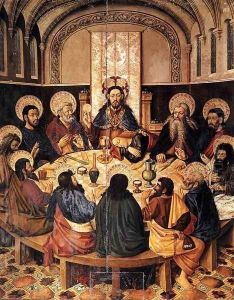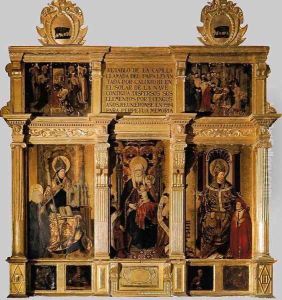Jaume Baco Jacomart Paintings
Jaume Baçó, also known as Jacomart, was a Spanish painter of the Gothic and early Renaissance periods, born around 1410. Despite the lack of comprehensive records about his early life and training, it is believed that he was of Catalan origin, possibly born in Barcelona. Jacomart's work is noted for its fusion of Northern European influences with the Italianate style, a reflection of the diverse artistic currents that flowed through the Iberian Peninsula during his lifetime.
Jacomart's career took a significant turn when he moved to the Kingdom of Valencia, where he became a prominent figure in the Valencian school of painting. His presence in Valencia is documented from the 1440s onwards. One of his major commissions was for the altarpiece of the high altar of Valencia Cathedral, a work that marked him as a leading artist of his time in Spain. This piece, created in collaboration with the Italian painter Paolo da San Leocadio, showcases Jacomart's mastery of both Gothic and early Renaissance styles, blending detailed narrative scenes with a growing interest in perspective and volume.
Throughout his career, Jacomart received numerous commissions from religious institutions and was involved in the decoration of various churches and cathedrals. His work is characterized by its detailed depiction of religious iconography, meticulous attention to detail, and vibrant use of color. Despite the influence of Italian Renaissance elements in his work, Jacomart maintained a distinctively Gothic sensibility, particularly in his use of elongated figures and ornate backgrounds.
Jacomart's contributions to the Valencian school and his role in bridging the Gothic and Renaissance styles in Spain are significant, yet his work has not received the same level of scholarly attention as some of his contemporaries. He died in 1461, leaving behind a body of work that reflects the transitional artistic period in which he lived. Today, his remaining works are cherished as important examples of 15th-century Spanish art, offering insight into the cultural and artistic exchanges that shaped the Renaissance in the Iberian Peninsula.

